Laminar & turbulent flow.
For more related figures, please have a look at the Fluid Dynamics category.
Edit and compile if you like:
% Author: Izaak Neutelings (November 2020)\documentclass[border=3pt,tikz]{standalone}\usepackage{physics}\usepackage{tikz}\usepackage[outline]{contour} % glow around text\usetikzlibrary{patterns,decorations.pathmorphing}\usetikzlibrary{decorations.markings}\usetikzlibrary{arrows.meta}\usetikzlibrary{calc}\tikzset{>=latex}\contourlength{1.1pt}\colorlet{mydarkblue}{blue!40!black}\colorlet{myblue}{blue!70!black}\colorlet{myred}{red!65!black}\colorlet{myorange}{orange!90!black!90}\colorlet{vcol}{green!45!black}\colorlet{watercol}{blue!80!cyan!10!white}\colorlet{darkwatercol}{blue!80!cyan!80!black!30!white}\colorlet{metalcol}{blue!25!black!30!white}\tikzstyle{piston}=[blue!50!black,top color=blue!30,bottom color=blue!50,middle color=blue!20,shading angle=0]\tikzstyle{water}=[draw=mydarkblue,rounded corners=0.1,top color=watercol!90,bottom color=watercol!90!black,middle color=watercol!50,shading angle=20]\tikzstyle{horizontal water}=[water,top color=watercol!90!black!90,bottom color=watercol!90!black!90,middle color=watercol!80,shading angle=0]\tikzstyle{metal}=[draw=metalcol!10!black,rounded corners=0.1,top color=metalcol,bottom color=metalcol!80!black,shading angle=10]\tikzstyle{vvec}=[->,very thick,vcol,line cap=round]\tikzstyle{force}=[->,myred,very thick,line cap=round]\tikzstyle{width}=[{Latex[length=4,width=3]}-{Latex[length=4,width=3]}]\def\tick#1#2{\draw[thick] (#1)++(#2:0.12) --++ (#2-180:0.24)}\begin{document}% LAMINAR FLOW LAYERS\begin{tikzpicture}\def\L{5.0} % total length\def\Rx{0.40} % big pipe vertical radius right\def\Ry{0.90} % big pipe vertical radius right\def\v{1.3} % velocity magnitude\def\N{3} % velocity magnitude% WATER
Click to download: fluid_dynamics_laminar.tex • fluid_dynamics_laminar.pdf
Open in Overleaf: fluid_dynamics_laminar.tex



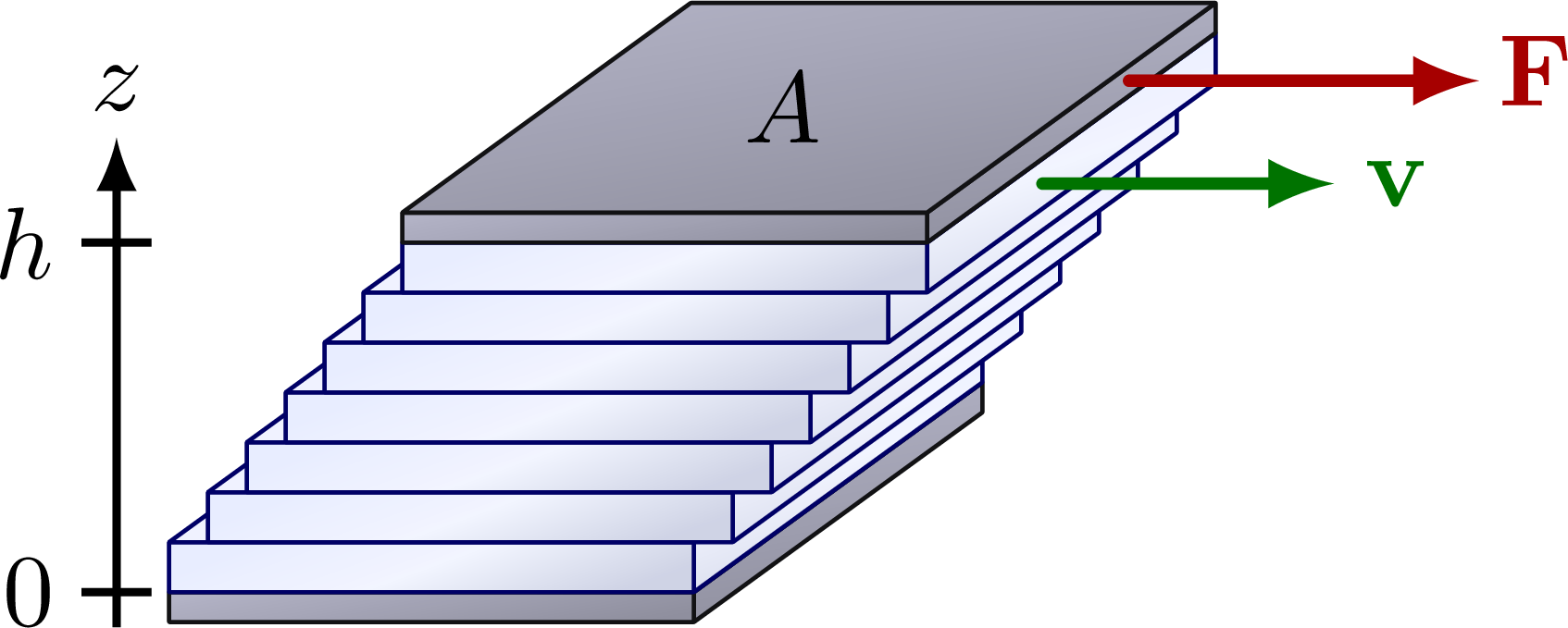
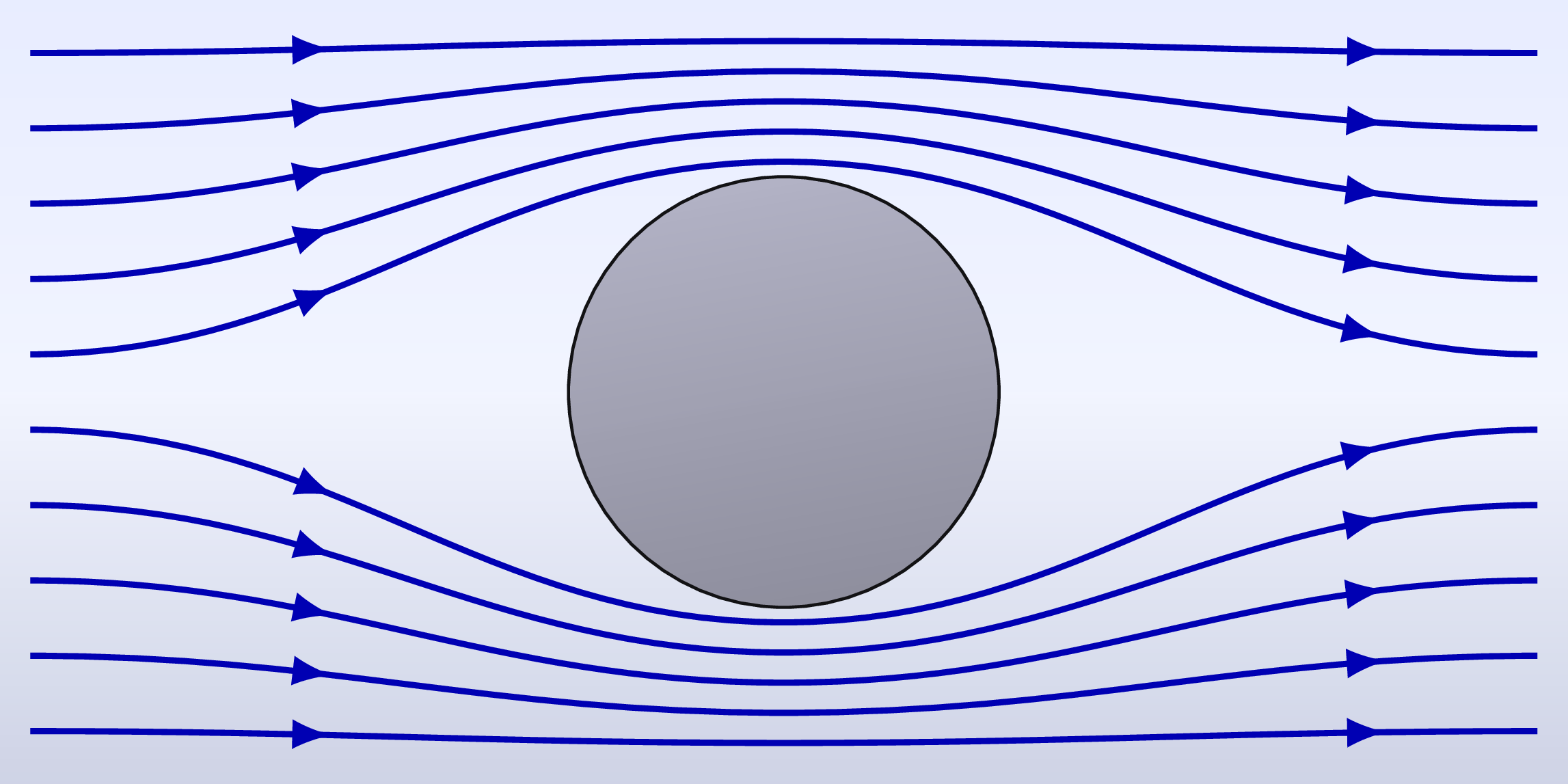
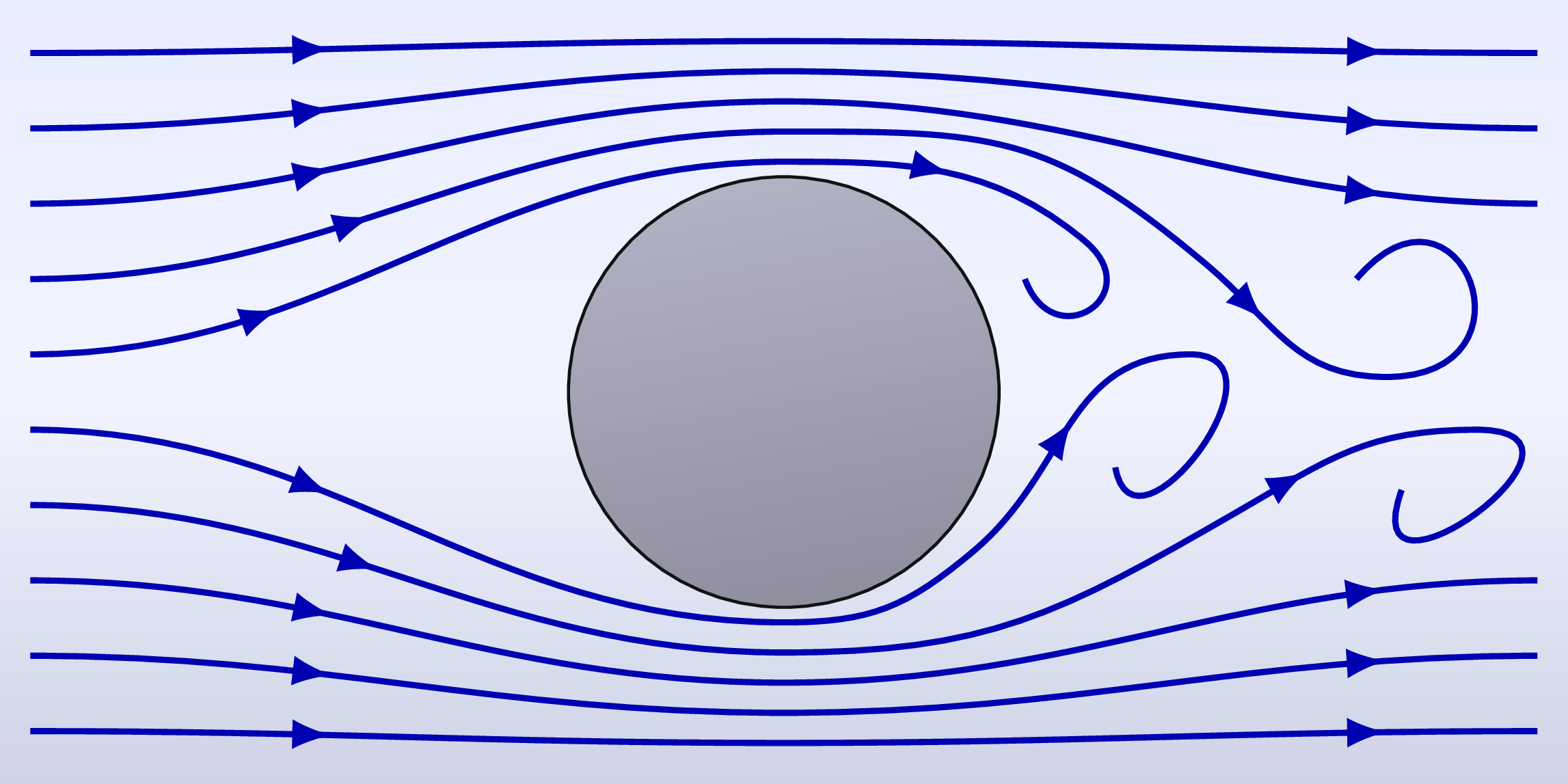

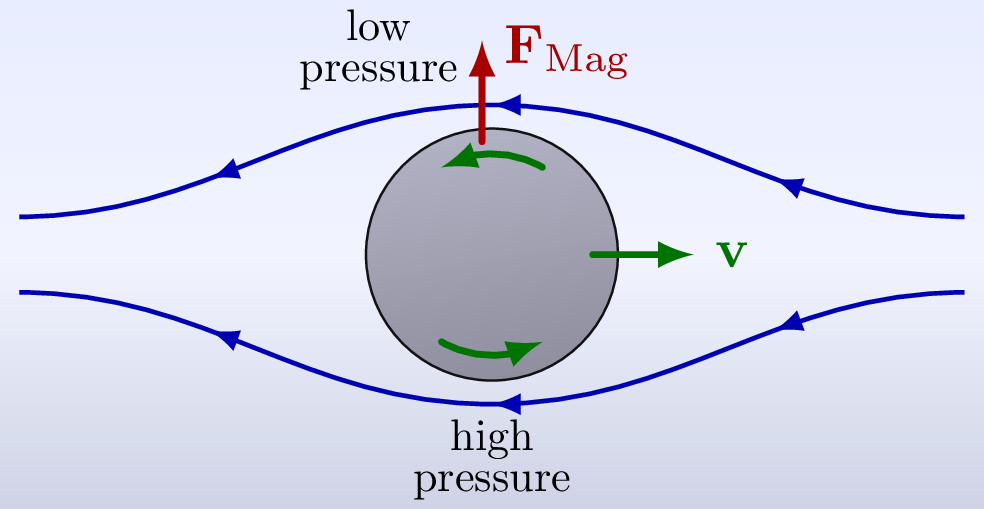
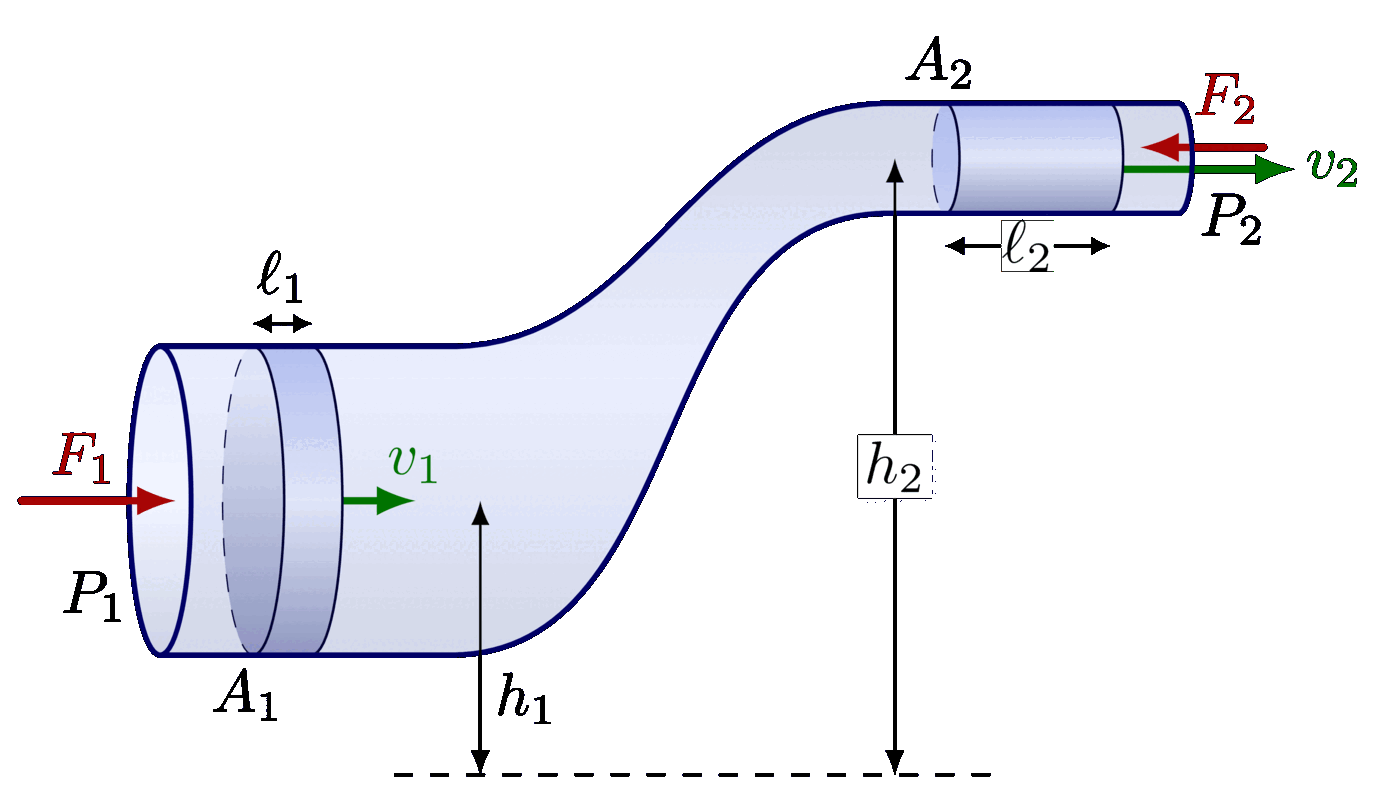
Great, well done Izaak.
I was very happy when I came across these many beautiful TikZ examples by chance.
I made a few changes to the first image about laminar flow because it didn’t seem to be entirely consistent.
Here would be the adapted source code:
% LAMINAR FLOW LAYERS
\begin{tikzpicture}
\def\L{5.0} % total length
\def\Rx{0.40} % big pipe vertical radius right
\def\Ry{0.90} % big pipe vertical radius right
\def\v{1.3} % velocity magnitude
\def\N{3} % velocity magnitude
% WATER
\draw[horizontal water,thick]
(0,\Ry) — (0,-\Ry) coordinate (A1) –++ (\L,0) arc(-90:90:{\Rx} and \Ry) — cycle;
% \draw[water]
% (\L,0) ellipse({\Rx} and \Ry);
\draw[water]
(0,0) ellipse({\Rx} and \Ry);
\foreach \i [evaluate={\x=(\i-0.5)/(\N+0.5)}] in {1,…,\N}{
\draw[mydarkblue, dashed, dash pattern=on 2pt off 1pt]
(0,0) ellipse({\x*\Rx} and \x*\Ry)
(\L,0) ellipse({\x*\Rx} and \x*\Ry);
\draw[mydarkblue ,dashed, dash pattern=on 2pt off 1pt]
(0, \x*\Ry) –++ (\L,0)
(0,-\x*\Ry) –++ (\L,0);
\draw[mydarkblue,dashed, dash pattern=on 2pt off 1pt]
(\L,-\Ry) arc(270:90:{\Rx} and \Ry);
}
\draw[mydarkblue,thick]
(0,0) ellipse({\Rx} and \Ry);
\foreach \i [evaluate={\x=(\i-0.5)/(\N+0.5)}] in {1,…,\N}{
\draw[mydarkblue] (0,0) ellipse({\x*\Rx} and \x*\Ry);
}
\draw[vcol!70!black,dashed, dash pattern=on 2pt off 1pt,samples=100, smooth, variable=\y, domain=-1:1]
plot({0.5*\L+\v*(1-0.8*\y*\y)},\y*\Ry);
\draw[vvec] (0.5*\L,0) –++ (\v,0);
\foreach \i [evaluate={\y=(\i)/(\N+0.5); \vy=\v*(1-0.8*\y^2);}] in {1,…,\N}{
\draw[vvec] (0.5*\L, \y*\Ry) –++ (\vy,0);
\draw[vvec] (0.5*\L,-\y*\Ry) –++ (\vy,0);
\draw[vcol!70!black,dashed, dash pattern=on 2pt off 1pt]
(\L/2,-\Ry) arc(270:-90:{\Rx} and \Ry);
\draw[vcol!70!black]
(\L/2,-\Ry) arc(-90:90:{\Rx} and \Ry);%
}
\foreach \i [evaluate={\x=(\i-0.5)/(\N+0.5)}] in {1,…,\N}{
\draw[vcol!70!black ,dashed, dash pattern=on 2pt off 1pt]
(0,0) ellipse({\x*\Rx} and \x*\Ry)
(\L/2,0) ellipse({\x*\Rx} and \x*\Ry);
}
\end{tikzpicture}
Thank you for sharing these source code examples with us. With best regards
G. Stengert